A Quilty Adventure Part VIII: How to Sew with Canvas
I’ve recently rediscovered the magic of sewing with canvas in one of my latest projects, so I thought we could all rediscover the magic of one of the best blog series’ of all time… our quilty road trip of 2017!
After the last Quilty Adventure post on sewing with Lawn, you thought our beautiful trip was over. But guess what. It’s summer, and we’re going on a reunion tour. Destination: Canvas.
Canvas is both tough and outdoorsy, but also has an edgy, artsy side. You may remember it from such outdoor adventures as: sailing. Or such works of art as: any work of art on a canvas (yes, that’s the canvas we’re talking about!)
Canvas’ durability can be reaaally useful, especially for backing quilts that you plan to take with you into the great outdoors, so let’s get a feel for how this baby operates.
Read More From Our Quilty Adventures!
WELCOME TO CANVAS
It’s all smooth sailing from here
Trending patterns!
How to Sew with Canvas: The History
Modern canvas is usually made of cotton or linen, but back in the day (like waaay back in the day), canvas was made from hemp! Though canvas is similar to denim in its heaviness and durability, it is a plain weave instead of a twill weave. (See this post on Denim vs. Chambray for a full rundown AND diagram.)
Historically, came in two types: plain and duck. Duck! Though it’s funny and I wish Duck canvas got its name from ducks, it actually comes from the Dutch word for cloth, doek. The Duck variety is more tightly woven than plain. The word “canvas” comes from the french word canavaz, or canevas, which basically comes from the Latin word for “made of hemp.” Real creative.

But canvas DID get real creative when it started being stretched over wood frames for painting in the 1400s! For hundreds of years, canvas has been home to some great paintings, as well a medium for tents, shoes, sails… and some really cute bags. Thank you for your service, canvas.
Special Attractions
Canvas is a one-of-a-kind fabric with some pretty impressive stats. First of all, it’s incredibly strong, it’s durable, and some canvas fabrics are treated to be awesomely waterproof. This is a huge plus when making outdoor furniture coverings, bathroom bags, or backing quilts you plan to use outdoors (why do I keep mentioning that over and over? Oh I don’t know… you’ll just have to see…)
Even though the tough, heaviness of canvas can be intimidating, it can be a useful and pretty simple fabric to work with if you have the right tools...
How to Sew with Canvas: What to Pack
Canvas is strong and heavy-duty, so everything you take with you should be strong and heavy-duty, too. A lot of people ask if it’s okay to sew with canvas on your home sewing machine. The answer is YES! With an asterisk. And that asterisk stands for this stuff:
- Thread: Bring strong thread. 40 wt. cotton thread will do the job, but if you’re worried about lots of outdoor use, I suggest a water resistant bonded polyester thread. Before quilting with that heavy duty poly thread, run a few tests to see what works for you and your sewing machine. Try these different variations: 1. Thick poly thread as just the top thread. 2. Thick poly thread in both top and bobbin. 3. Adjust the tension of the top thread as needed once you have the combination of top and bobbin thread that you like.
- Needles: Strong thread needs a strong needle, especially when you have a closely-woven and heavy fabric like canvas. Broken needles are the wooorst. Try using a size 90/14 universal needle or 100/16 jeans needle.
- Rotary Cutter: Make sure that blade is sharp. If you haven't switched your rotary blade in a while, now's the time to safely dispose of it and get a new one.
- Machine Tension: Make sure your machine can handle it. Like I said previously, you don’t necessarily need UV-protected, water-resistant thread. If your machine if unhappy with you after a few tests, switch back to the 40 wt.


Get the above quilt pattern, Glitter & Glow, in the shop!
The Itinerary
It’s time to plan out our great canvas adventure! Now that we have the roughest, toughest tools that sewing has to offer, we can get excited about the journey ahead. Here are some important things to keep in mind:
- The Prewash: As we mentioned earlier, most canvas is now made from cotton, linen, or a blend of the two. If you're wondering how canvas shrinks and frays, look to see what's in it and treat it appropriately. The Rifle Paper Co. canvas (now out of print) shown in the pics is a 50/50 blend – so I went ahead and prewashed it because I knew that even just 50% linen could cause some major shrinkage.
- The Stitch: Use a longer stitch than normal – between a 3 and a 4. With any heavy fabric, longer stitches will give you a nicer look, and smoother sailing (pun intended).
- Flat Seams: Pay extra attention to your seams. Specifically, get them as flat as possible. Canvas is pretty bulky, so cut back as much as you can. (Hint: Use a Tailor's Clapper!)
- Sew Slowly: Take your time. You’re going to want to hold your canvas as firmly as you can while you feed it into the machine. No pushing, no pulling, no risking a broken needle. Hold it firmly, and let it do it’s thang.
- Clips Over Pins: Finding canvas tough to pin down? Try clips. Unfinished seams can be held in place for a limited time with some handy clips. (They also have a dual purple of keeping my chip bags closed!)
- The Foot: Put your presser foot in the air like you just don’t care. If you think your presser foot can’t get any higher than its high position… check again! It probably can. And you’re going to want it higher than normal since you are sewing thicker layers.
Before You Check Out
One last tip: when storing canvas, it’s better to roll than to fold. Creases in canvas can be easy to form and hard to remove, so rolling canvas can save you all the heartache. Do you sew with canvas on the reg? Any tips you'd like to share? Let us know in the comments!

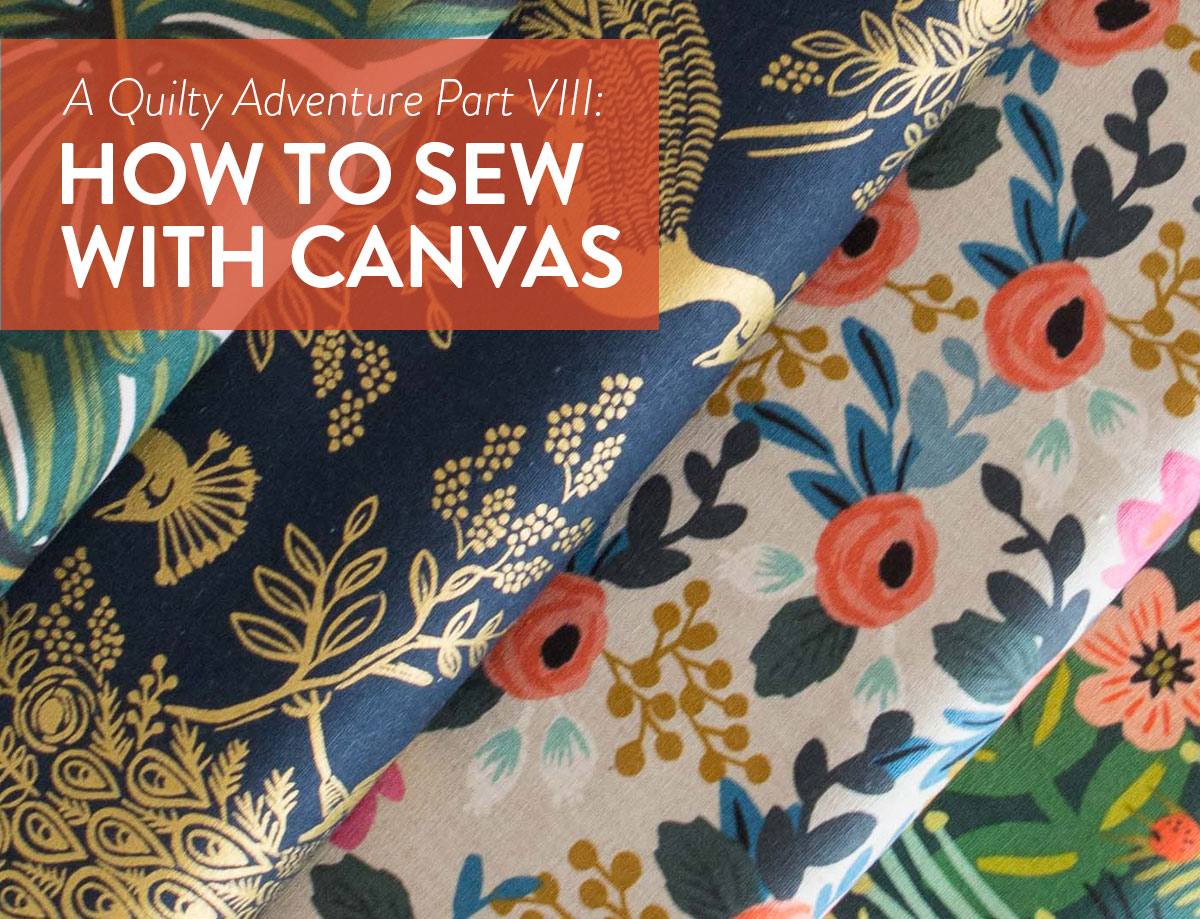

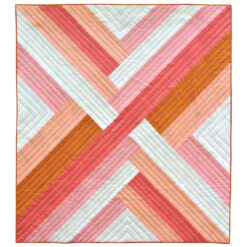
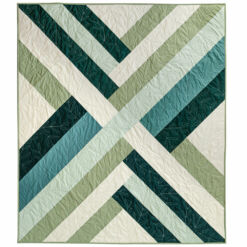
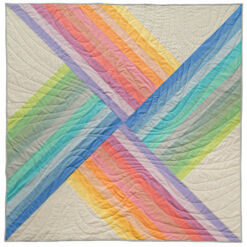
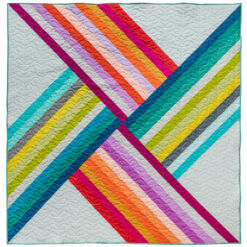
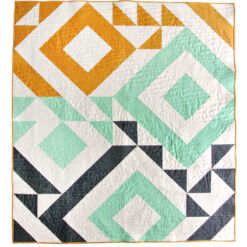
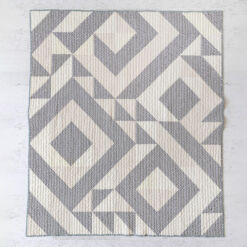
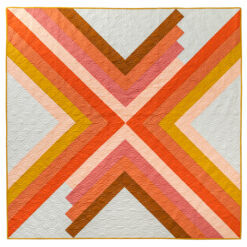
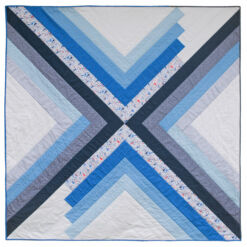
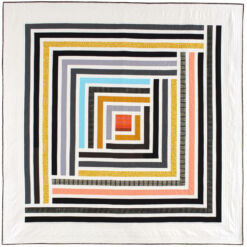
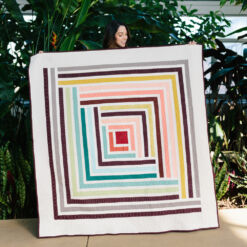
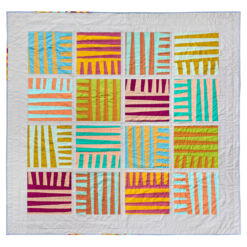
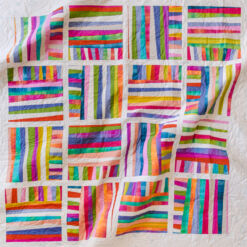
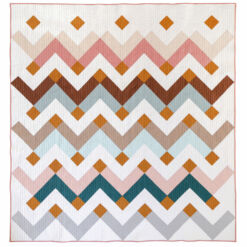
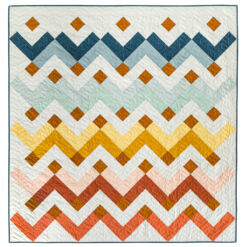
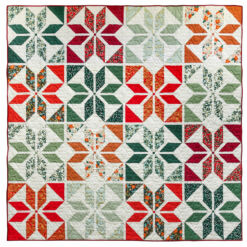
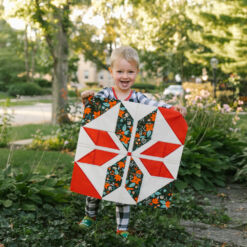
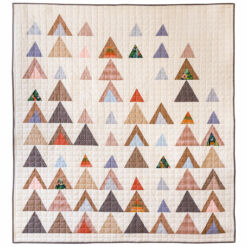
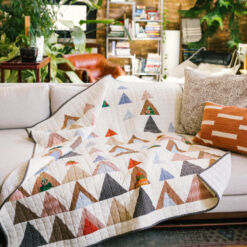


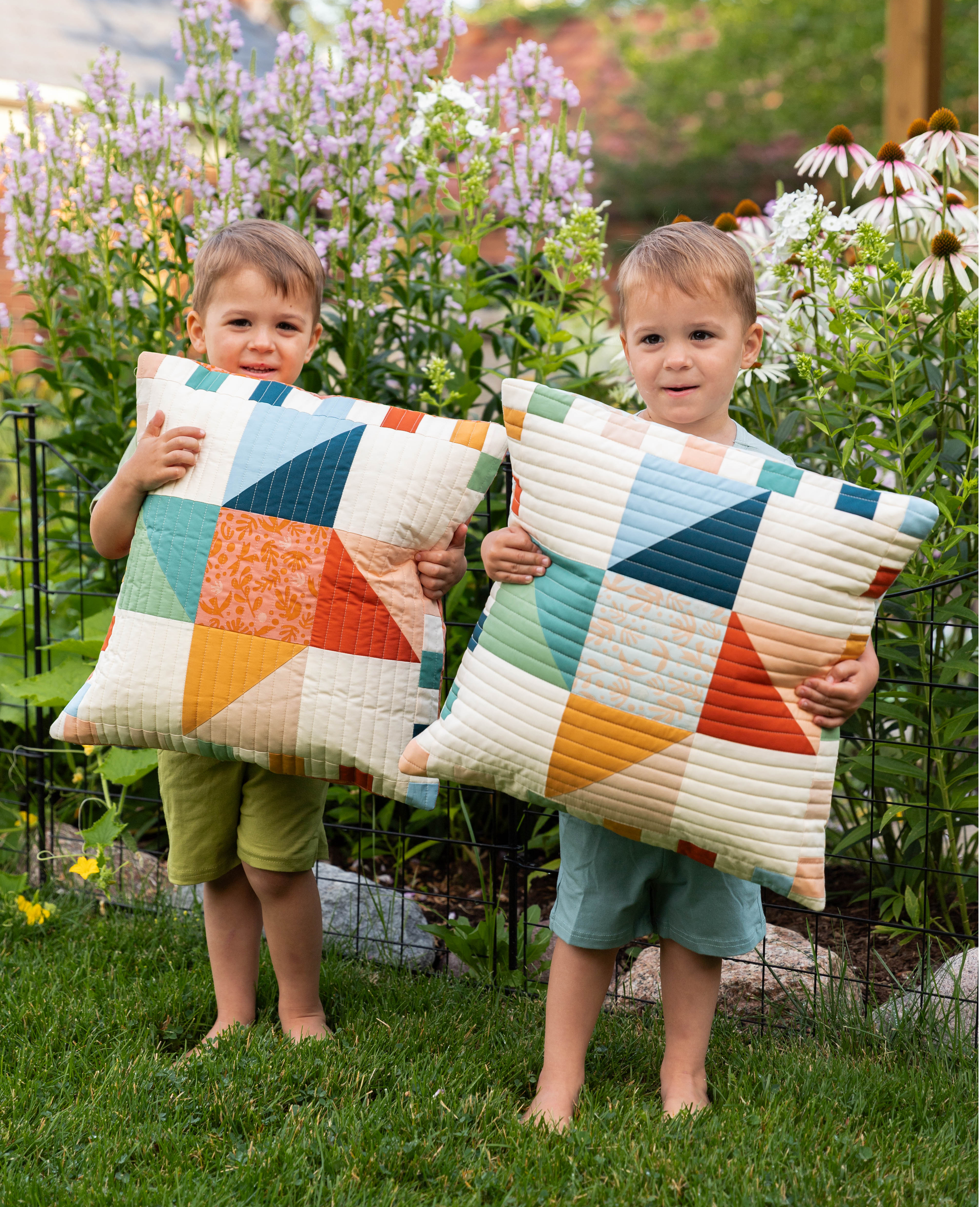

I sew with canvas all the time for making bags. I love the weight of it, the way it sews! It’s truly my favorite fabric to make with! Great blog post! You covered it all. But now I seriously think I may need the clapper!
I hadn’t thought of using canvas as a quilt backing! I made a quilt for my daughter, the Up North pattern with the camper and trees, and truly want her to be able to use it while camping with grandparents. Picking a backing put the project on hold because I couldn’t figure out what medium I wanted, lawn?, cotton?, flannel? and now canvas?! I’m definitely tempted to try the canvas now lol. It would be interesting to see how a pre-washed canvas backing interacts with a cotton front that wasn’t pre-washed as well as how well my long arm does with canvas.
I think it will work great! Especially if you get a linen/cotton blend, chances are, the backing may still shrink a bit more after the second wash too. What a thoughtful gift!
I notice you hand stitch your binding, as do I. Do you find it difficult, or does your hand get sore, when you’re stitching to a canvas backing? Do you use a special needle? I wish I’d thought of canvas backing before; I just made (in May) a picnic quilt for my son-in-law to commemorate his graduation from law school; I should think canvas would be great for that. I just selected a fairly dark quilting cotton.
Great questions! I didn’t find it difficult, probably because I used a relatively sturdy embroidery needle. I like to use embroidery needles when I hand quilt, so I have a lot in stock. I usually stay around the 5-7 size range.
Suzy,
I’m making a pineapple quilt for my teenage daughter and wondered about using it as a beach blanket to lay down first and then put the towel on top. How do you think the canvas (may look into the water proof type) will handle the sand?
Canvas is really strong and should handle the sand well. If you want it to be waterproof, an outdoor fabric is not a bad idea. Have you looked into Premier Prints?
This is very timely for me. I just finished making a denim quilt top from my husbands old jeans. I made HST’s and it has great color variance. My dilemma was what to back it with…and voila, I ran into your post on outdoor fabric. Never thought of it until now. I think it’s the answer. I’m not adding batting, so the seems even though I ironed them open, are extremely lumpy! I sewed 1/2″ seams and still. The seams don’t stay open. Any suggestions on this? Thanks Suzy for all your tips and inspiration.
Yes, lumpy seams are so very annoying, and also pretty unavoidable with a fabric like denim. I have two suggestions: One is to go over those seams with steam and a Tailor’s Clapper. I know it’s just a piece of wood, but it’s a magical piece of wood.
My second suggestion is to stick with your plan of skipping out on batting, but consider using a piece of jersey. Most knits are 60″ wide so hopefully you won’t have to piece it together. They are lightweight, have a beautiful drape, and won’t add bulk or puffiness to your quilt. It will, however, smooth out some of the lumps. If you want to see an example, I used a piece of jersey as the “batting” in my orange Glitter and Glow quilt.
Thanks for the helpful info!! I’m confused by your comment about lifting the presser foot. You don’t really mean to leave it up while sewing, do you?
No, I just mean that if you can, you may need to raise the height of it a little bit so it can feed slightly thicker fabric through the machine without lots of added pressure. Many sewing machines have that feature. For example, I mostly sew on a BERNINA 770 QE. There’s actually a range 1-50, 50 being standard foot down and foot pressure, all the way up to no pressure at all. For canvas, I will usually change that number from 50 to about 35 – so it’s slightly less pressure on the thick fabric, but still some pressure. Does that make sense?
I paint canvases and came across this article when I googled how to make a quilt with painted canvases. Guess how many articles I found? lol Yep, zero. But its SUCH a good idea don’t you think? Any tips on something like that? I appreciate it.
It sounds like you would like to make a wall hanging from painted canvases and not a quilt to cuddle, yes? I suggest sewing painted canvas as you would regular canvas, except at half the speed. The paint could gum up a needle and break your thread if you sew too quickly. Use a thick needle, like 90/14 and at least 40 wt. thread. Good luck!
Seeing this three years later…could the quilt be made with plain canvas, then painted afterwards?
Fabric painting is a pretty common technique in the art quilt world! We have a basic tutorial about painting fabric so you can decide how you’d like to try it out: https://suzyquilts.com/diy-fabric-painting-safe-for-your-quilts/
Ooooh. This was helpful. Never sewed with canvas, but have a possible project in mind…. can you speak to how canvas works on a longarm? I have a Gammill Statler Stitcher and would ASSUME everything would be the same as for a domestic machine (i.e. stronger thread, stronger needle, maybe a little slower pace…). So glad you posted this! Your site is quickly becoming a go to for little things I’ve missed along the way in my self-taught quilting education. Yay Suzy! : )
I know this is an old post, so I don’t know if you’re still replying to comments. Like another reader, I am wondering how a not-prewashed cotton quilt top will work with a prewashed canvas back. I am planning to back my Rifle Paper Wonderland quilt with coordinating Rifle canvas on back. Should I prewash the canvas twice? Should I prewash the top fabric too (I haven’t started it yet)? I really don’t want to run into any issues so anything you’ve learned about shrinking rates in quilters cotton vs canvas would be helpful!
Hi Jeanie, I think it’s always safer to prewash all of your fabric. This will prevent any fabric bleeding, excessive fraying or unusual puckering. With that said, since the canvas will only be on the back and not mixed in with the quilting cotton on the front, you’re safe doing either.
I have a couple blogs posts that I think will help – https://suzyquilts.com/make-an-outdoor-quilt-guide-to-canvas/ and if you scroll down to the sction called Mango Peach Glow throw in this post – https://suzyquilts.com/glitter-glow-quilt-pattern-use-scraps/
Thank you!
Hi Suzy,
Im making a quilt out of scraps of old fabric. Can I use canvas and flannel scraps with my regular quilting weight cotton scraps?
Yes, definitely! Just make sure to use at least a 1/4″ seam allowance.
Thanks, this is my question too! Yay!
I was just going to ask about mixing canvas with cotton! Thanks for answering all the questions!
I use canvas to back the quilt panels that I intend to frame. I can stitch to my hearts content and the cotton is fine and doesn’t pucker on me. I use Glide or Isacort (I think both are 40 wt thread). I am using a Bernina Q20 sit down Long arm. The canvas works great! It doesn’t stretch so everything stays in place. Yes, it’s a bit hard to pin, but you can do it. If there is a way for pictures, I can post some.
I’m curious if anyone has used duck cotton in a quilt top mixed with regular cotton? I was gifted some adorable lilac koala duck cotton, and would love to incorporate it into one of my donation quilts, but wasn’t sure if it’s a little too hard.
Duck cotton will feel a lot different than quilting cotton. If you want to use it, maybe you could make a traveling sleeve for the quilt or even just use it as the binding. I don’t think people will want to cuddle with it.
Interesting discussion. I have been using cotton canvas and home dec fabrics for backings for a while. The hard part has been picking a batting.